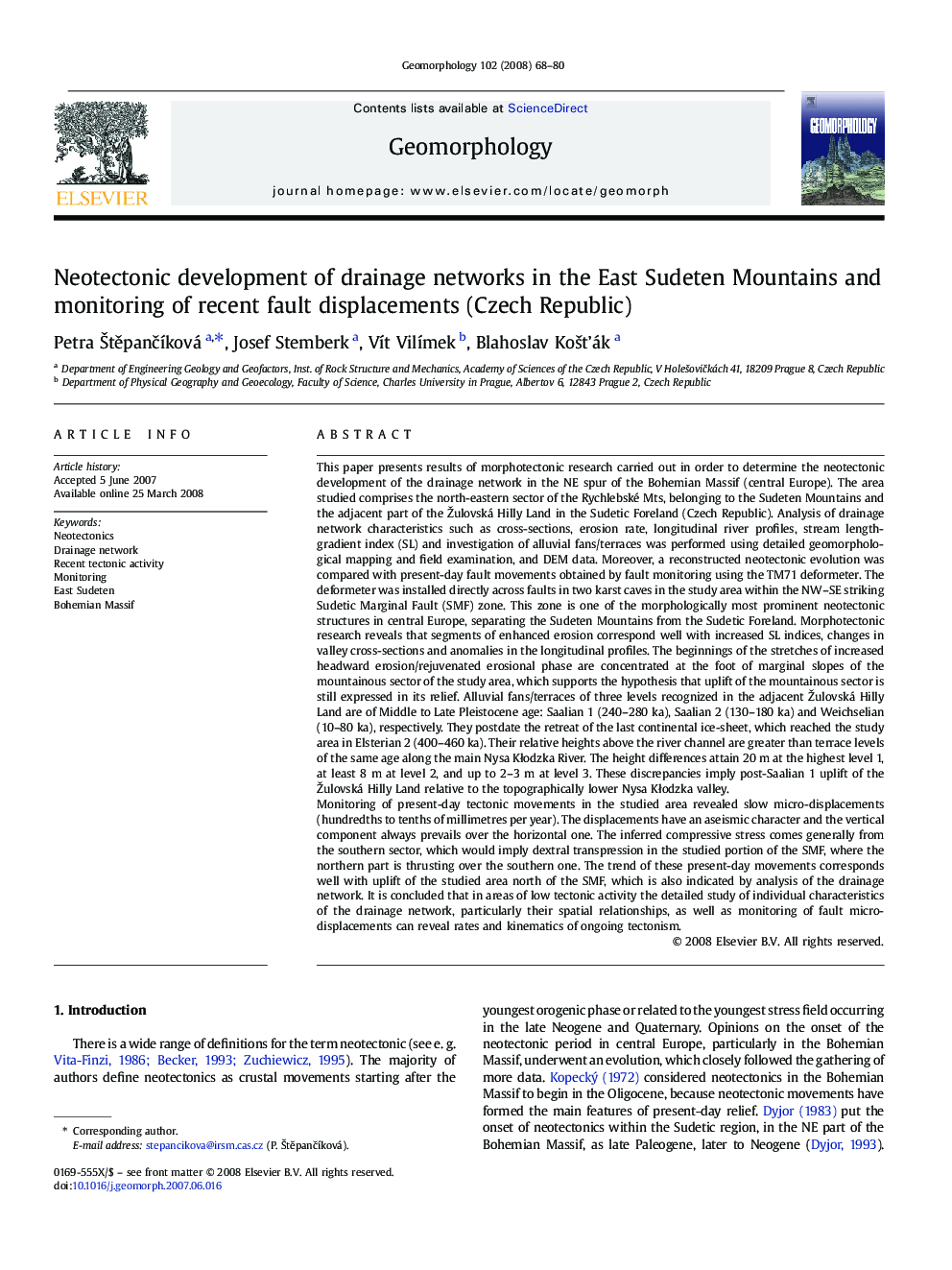| کد مقاله | کد نشریه | سال انتشار | مقاله انگلیسی | نسخه تمام متن |
|---|---|---|---|---|
| 4686605 | 1349557 | 2008 | 13 صفحه PDF | دانلود رایگان |

This paper presents results of morphotectonic research carried out in order to determine the neotectonic development of the drainage network in the NE spur of the Bohemian Massif (central Europe). The area studied comprises the north-eastern sector of the Rychlebské Mts, belonging to the Sudeten Mountains and the adjacent part of the Žulovská Hilly Land in the Sudetic Foreland (Czech Republic). Analysis of drainage network characteristics such as cross-sections, erosion rate, longitudinal river profiles, stream length-gradient index (SL) and investigation of alluvial fans/terraces was performed using detailed geomorphological mapping and field examination, and DEM data. Moreover, a reconstructed neotectonic evolution was compared with present-day fault movements obtained by fault monitoring using the TM71 deformeter. The deformeter was installed directly across faults in two karst caves in the study area within the NW–SE striking Sudetic Marginal Fault (SMF) zone. This zone is one of the morphologically most prominent neotectonic structures in central Europe, separating the Sudeten Mountains from the Sudetic Foreland. Morphotectonic research reveals that segments of enhanced erosion correspond well with increased SL indices, changes in valley cross-sections and anomalies in the longitudinal profiles. The beginnings of the stretches of increased headward erosion/rejuvenated erosional phase are concentrated at the foot of marginal slopes of the mountainous sector of the study area, which supports the hypothesis that uplift of the mountainous sector is still expressed in its relief. Alluvial fans/terraces of three levels recognized in the adjacent Žulovská Hilly Land are of Middle to Late Pleistocene age: Saalian 1 (240–280 ka), Saalian 2 (130–180 ka) and Weichselian (10–80 ka), respectively. They postdate the retreat of the last continental ice-sheet, which reached the study area in Elsterian 2 (400–460 ka). Their relative heights above the river channel are greater than terrace levels of the same age along the main Nysa Kłodzka River. The height differences attain 20 m at the highest level 1, at least 8 m at level 2, and up to 2–3 m at level 3. These discrepancies imply post-Saalian 1 uplift of the Žulovská Hilly Land relative to the topographically lower Nysa Kłodzka valley.Monitoring of present-day tectonic movements in the studied area revealed slow micro-displacements (hundredths to tenths of millimetres per year). The displacements have an aseismic character and the vertical component always prevails over the horizontal one. The inferred compressive stress comes generally from the southern sector, which would imply dextral transpression in the studied portion of the SMF, where the northern part is thrusting over the southern one. The trend of these present-day movements corresponds well with uplift of the studied area north of the SMF, which is also indicated by analysis of the drainage network. It is concluded that in areas of low tectonic activity the detailed study of individual characteristics of the drainage network, particularly their spatial relationships, as well as monitoring of fault micro-displacements can reveal rates and kinematics of ongoing tectonism.
Journal: Geomorphology - Volume 102, Issue 1, 15 November 2008, Pages 68–80